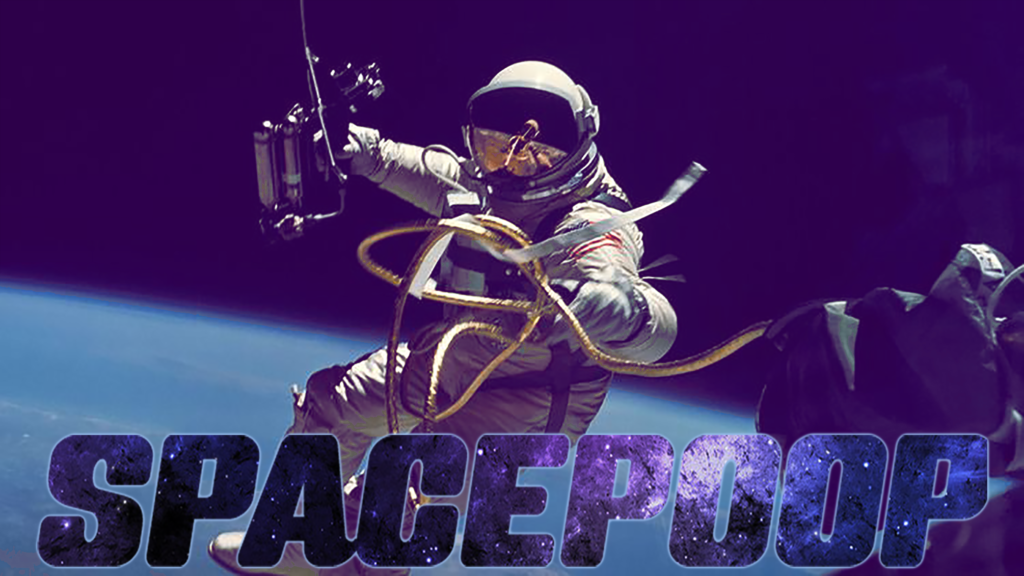NASA Space Poop Challenge
By Mackenzie Amyx, Christian Amyx, Scott Amyx
ABOUT THE NASA SPACE POOP CHALLENGE
BACKGROUND
WHAT A BREAKTHROUGH LOOKS LIKE
Minimum Requirements
-
A system to route and collect human waste away from the body without the use of hands
-
Keep urine and/or fecal waste away from a crew member’s body for a minimum of 144 hours while in a space suit
-
Operate in a microgravity scenario
-
Operate within a full launch and entry suit at an internal pressure of 4.3 PSID and 100% oxygen environment which cannot be opened for manual access within the 144 hour time period
-
Operate while a crew member is moving, bending, and/or seated and strapped into a chair
-
Manage at least one of the three following human wastes for up to 6 days
-
Manage up to 1L (4 cups) per day of urine per crew member (based on planned liquid intake during mission)
-
Manage up to 75 grams (⅓ cup) of fecal mass and 75mL fecal volume per crew member (based on planned food intake during mission). Fecal matter may range from liquid to solid, but the Solution is not required to handle uncontrollable, ongoing diarrhea.
-
Manage up to 80 mL of menstrual fluid over 6 days
-
Require less than five minutes for a crew member to, on their own, set up and secure the Solution to their body, prior to, or along with, getting into their launch and entry suit.
-
Operate effectively for both men and women of varying size and weight within the range of 1% to 99% on the Airforce ANSUR anthropometric database.
-
Relevant measurements for your solution, which might include, but not be limited to: waist circumference (24.2 to 43.5”), Buttock circumference (33.1 to 45.2”), Hip breadth, sitting (31.5 to 46.5”), Waist back (15.4 to 22”) and Waist depth (5.9” to 11.8”).
-
Solution Criteria
Constraints & Limitations
THE SMELLY FACTS
Current Available Solutions
-
Current commercial products that provide urine waste management utilize gravity to route and collect urine away from the body.
-
Some require the use of hands, and most are not meant to be used for 144 hours.
-
No commercial products have been found that provide fecal waste management for a 144-hour period with or without the use of hands.
-
While the implemented Solution can be discarded after each mission, it does have to function well for 6 days and multiple bowel and bladder evacuations.
-
Prior to that, men wore Urine Collection and Transfer Assembly (UCTA) and Fecal Collection Systems (FCS).
-
Women have never had anything besides the adult diaper while wearing a suit. When not wearing a suit, but within the vehicle, women had a choice of 3 versions of cup-type urine collection systems that used air flow to effectively cause urine to swirl away from a woman’s body.
-
A Urine Collection Device (UCD) is used during spaceflight to collect and contain urine. A UCD consists of a storage bag, adapter tubing, and disconnect hardware for both the male and female adapters. Each UCD bag can store approximately 1 quart of urine. The bags are either disposed of in the spacecraft waste management system (WMS) or returned to earth for further research. UCDs are also used outside the spacecraft during Extravehicular Activity (EVA) operations.
METHODOLOGY
-
Collection.
-
Storage.
-
Disposal.
ANALYSIS
Collection Phase
Material Science
Feces
Male Urine
Female Urine & Menstruation
Modification to LCVG Inner Suit
Demand Pressurized Valves
Universal Motor
Storage Phase
Outer Layer Over the Inner Suit
Enhanced Primary Life Support Subsystem
Disposal Phase
BRAINSTORMING
RECOMMENDATION
Minimum Viable Product with Minimal Change: Poopy Pants
Complete Solution with Potentially Substantial Change to Spacesuit and the Primary Life Support Subsystem
This blog is moderated by Mackenzie’s parents: https://medium.com/@ScottAmyx/ All comments will be reviewed and approved before publishing.

Recent Comments